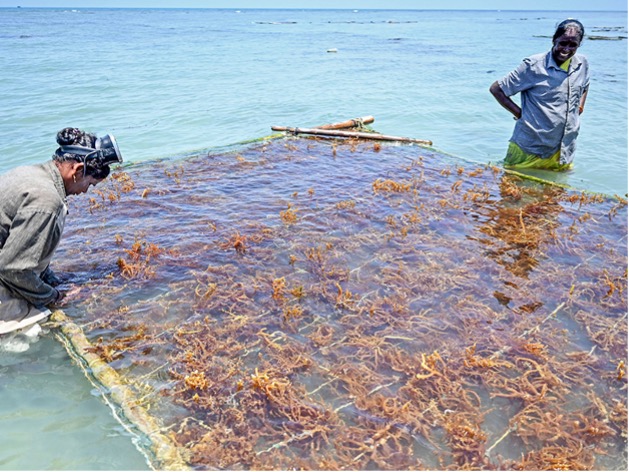India has unveiled an ambitious Seaweed Mission to revamp and modernize its small-scale seaweed farming, aligning with the global surge of interest in this climate-friendly and nutritionally rich underwater crop. The mission aims to span the nation’s extensive 7,500-km peninsular coastline and elevate national seaweed production from the current 30,000 tonnes to a staggering 11 million tonnes by 2025.
Veeragurunathan, a principal scientist at the government-run Marine Algal Research Station near Mandapam, highlighted the enormity of the task, stating, “India is only producing 0.02 per cent of the world’s total seaweed.” The plan envisions all nine maritime states participating in cultivation, potentially propelling India’s role in the global seaweed market to double digits.
India’s multifaceted strategy encompasses the establishment of a seaweed park in Tamil Nadu for processing wet and dried seaweed, the creation of model demonstration farms and seaweed nurseries, and the development of seaweed-based recipes tailored to the Indian palate.
While carbohydrate-rich grains remain the foundation of food security in India, seaweed’s nutritional benefits, versatile uses in processed foods, and sustainability make it a compelling dietary addition. Unlike traditional crops, seaweed can thrive without consuming additional land or freshwater resources, a crucial advantage in the face of climate change-related challenges such as heatwaves, droughts, and floods.
This growing interest in seaweed production aligns with global efforts to strike a balance between nature preservation and agriculture while implementing climate-smart dietary changes. The seaweed market, valued at approximately $17.85 billion in 2021, is projected to witness a 10 per cent annual growth as coastal nations like India work to scale up production.
The World Bank’s recent report highlights the potential for 10 emerging seaweed markets, spanning applications from animal feed to yield-boosting biostimulants, with an estimated growth potential of up to $11.8 billion by 2030. This is partly due to seaweed’s ability to sequester carbon and enhance marine biodiversity.
Beyond its economic potential, seaweed also plays a vital role in providing food for marine animals and channeling nutrients from seawater into the food system, underscoring its significance in the broader ecosystem.
As India’s coastal regions grapple with rising sea levels and erosion, coconut farmers are increasingly turning to seaweed cultivation, accentuating the urgency of professionalizing the sector and realizing its vast potential.

